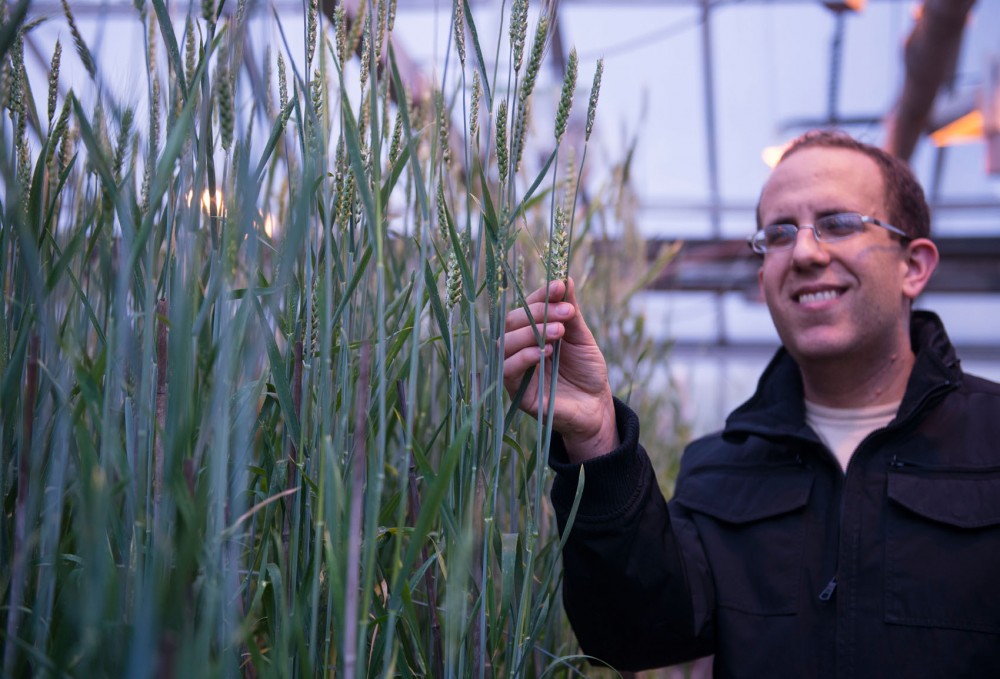Andrea Sandeen buys whole-grain foods like oatmeal and brown rice for their health benefits, but the math and philosophy junior said labels sometimes make it hard to distinguish which foods actually provide the benefits she’s looking for.
University of Minnesota experts from the Department of Food Science and Nutrition want to change that. Researchers participated in a multidisciplinary and international discussion in 2012 to develop a standardized definition of a whole-grain food, the results of which were published late last month in the journal Advances in Nutrition.
It would be easier to make healthy choices if food was marked in a standard way and if education on whole grains was better, Sandeen said.
University experts agree.
Almost globally, the accepted definition is that whole grains are full kernels with an outer bran layer, a germ and an innermost endosperm. Some examples of whole grains include corn, oats, wild rice and whole-grain wheat, but the definition is still debated around the world.
“We’re still in this middle ground,” said University professor Joanne Slavin, who contributed to the international discussion. “It’s really hard to come up with definitions everyone can agree on, and it’s frustrating sometimes.”
Creating national guidelines
The discussion happened at an opportune time, Slavin said.
Dietary guidelines from the U.S. Department of Health and Human Services and the U.S. Department of Agriculture come out every five years, and the next set is due in 2015.
The departments often take debates among international experts, like the whole grains discussion, into consideration when writing these guidelines.
Following similar discussions in 2005, the agencies recommended that the U.S. Food and Drug Administration create labeling standards for saturated fats. About a year later, the FDA mandated labeling foods with saturated fats.
The whole grains discussion recommended that a whole-grain product must contain at least 8 grams of whole grains in every 30 grams of food.
Slavin said deciding what constitutes a whole-grain food can be difficult after the grains are processed and changed. For example, corn goes through a different process to become popcorn than oats do to become oatmeal, or wheat grains do to become wheat bread.
“Nobody actually eats grains without turning them into a food. Horses eat oats, but people don’t eat oats … There’s usually some sort of processing so that it’s consumable,” she said.
Regulation is important, she said, because whole grains’ health benefits are important to consider when shopping and planning meals. Studies have found that eating whole grains can lead to reduced risk for cardiovascular disease, diabetes and excess weight gain.
In 1992, the USDA created an illustration that’s familiar to most: the Food Guide Pyramid, with the bread, cereal rice and pasta group on the bottom. There have been many advances since then, Slavin said, but many still rely on the model.
In 2011, the USDA implemented an alternative to the pyramid called MyPlate, which said grains should make up about one-fourth of one’s diet and half of those grains should be whole.
Getting grains onto the plate
Aerospace engineering freshman Zach Dohmen said while he eats full grains when he can, the price is often an issue. He generally buys white bread, a refined grain, because it’s cheaper.
“Most of the time, it’s whatever’s on sale,” he said. “If it’s bread with whole grains and it’s on sale, then I’d probably get it over just normal white bread.”
As the government implements more standards for whole grains and more people consume them, Slavin said, the price will hopefully go down.
“For the most part, I recommend whole grains to everybody,” said Boynton Health Service nutritionist Maggie Vertalino.
Those with gluten-free diets have whole-grain choices, too, Vertalino said, like amaranth, brown rice and corn.
When looking for whole-grain foods, she said, students should look for “100 percent whole grain” in the first two or three ingredients listed on the label.
Slavin also said a Whole Grains Council stamp or at least 8 grams of whole grains per serving can indicate a whole-grain food in stores.
“Any time you give a clear guideline of what a whole grain is and examples, I think that will benefit consumers,” Vertalino said.

















